Lund Point is part of a collection of three high rise buildings that belong to the Carpenter’s Estate in the borough of Newham. For four intense days I worked with a group of young cultural producers from East London and photographer Brendan Barry on the 20th and 21st floor of Lund Point, building camera obscura in various flats within the block. These large photographic images tell the story of Stratford’s skyline, and sparked conversations on regeneration and the communities that belong to east London. Condie Baiden was the lead for the cultural producers and Tapiwa Cronin filmed the experience, speaking to former residents and the group of producers, reflecting the changing landscape of Stratford and east London. Condie and Tapiwa grew up in Newham and Hackney respectively.
We worked with different local young producers each day, which allowed for a shared learning that was also individual in creative terms. Personal experiences bled into the choice of composition and the development process from negative to positive prints. Their stories, thoughts and opinions framed the production. The film captures the importance of collective hands-on learning, understanding community, history and infrastructure through the process of making.
Afia Yeboah, Senior Producer at the V&A and key support to the project, reflects on how working at Lund Point bridged personal and professional experience.
“We were not just the facilitators; we were participants in our own right, tracing the emotional maps of our childhood neighbourhoods, reliving personal histories and connecting across generations through this shared understanding of place, social housing and community”.
Afia Yeboah
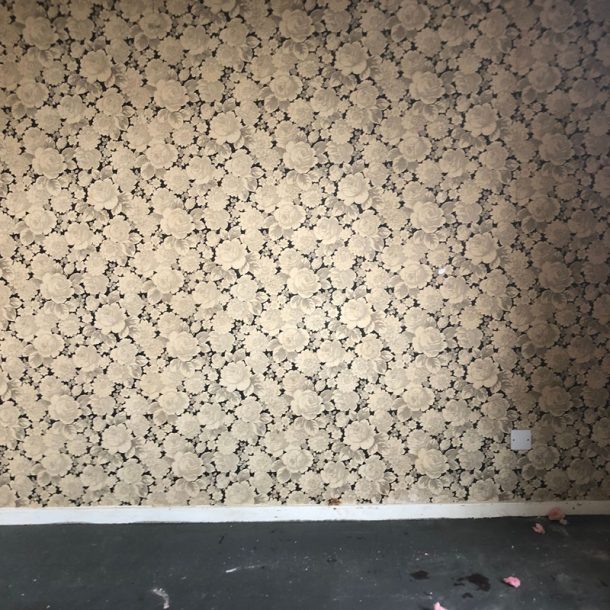

In my own experience, Lund Point felt foreign and familiar all at the same time. Fitzsimmons Court, a high-rise block in Stonebridge in north west London, felt larger than life as a child. Now demolished, it was once the home of my relatives. We played between floors and in the corridors; and the window sills were too high for us to ever look out. These spaces felt permanent and the density of residents allowed for a closer network, where a sense of play and community was crafted inside the concrete structures. These lived experiences remain as echoes within many residential high-rise blocks created in 1960s London. Lund Point is still populated by residents who will continue to build memories of living and existing within high-rise residential spaces and the unique experience that brings.
Social housing has influenced and impacted a generation of young east Londoners. Working in the Lund Point flats provided a vehicle to learn and share a creative practice with young people, and gave us an imperative to drive new conversations on the future of housing and urban regeneration.
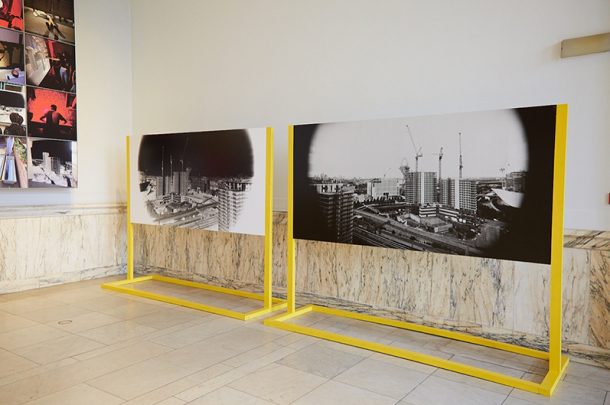
The view from Lund Point takes stock of the surrounding areas of Carpenter’s Estate. The train lines that run through Stratford Station and the London Aquatics Centre are the most recognisable sites when viewed from twenty floors up. Much of the view is overshadowed by cranes, half-finished structures and new developments. Prized views in this area are no longer the reserve of social housing, they are now captured for high rise office spaces, student accommodation and new private residential developments. The commodification of these views offers cultural significance at a price. The cultural producers shared their local knowledge: the closest walking route to the station, where it was good to get lunch, and how much their claim to the area has changed over the years. Making these photographs ensures their stories within Lund Point are archived.
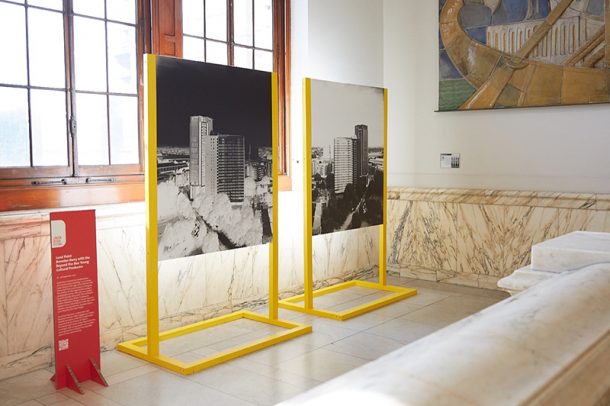
The project opened up conversations familiar to anyone who grew up in London. The views from Lund Point revealed the saturation and addiction to new development, privatised space and the absence of green and open areas. The cranes, the strains of “when did that appear?” and “what are they building there?” echoed across the creation of these large photographs. Simultaneously it introduced an east London that also felt newly written by the cultural producers, one that few masterplans ever successfully weave through new urban development.
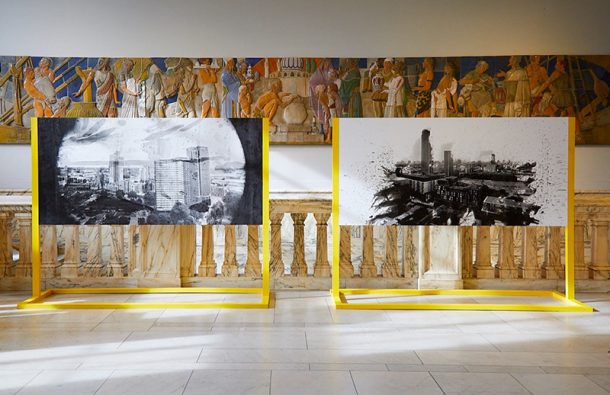
Sometimes the process of making these prints felt like capturing the scenery out of a moving car. In the local area, pop-up community spaces and amenities easily mask the speed of change from the ground. From this height and perspective the cultural producers shared their desires for London. Discussions that were held in dark rooms, under red lights and in the summer sun remain in the images they made.
Afia reflects on the mindset of the young people and how they opened up to one another about fears associated with redevelopment:
“There are ubiquitous thoughts that every person who grew up on an inner London estate will be familiar with … ‘will this be my home in a few years time? Will I be able to afford to live here when I get older … if these plans do go ahead … where will they rehouse us?’ For the young person in particular: ‘If leave, how will I maintain solidarity to the endz?’”.
Afia Yeboah
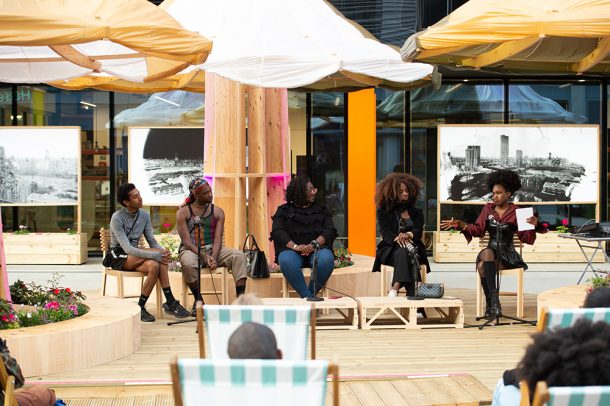
In August 2021, the Cultural Producers organised and ran their very own summer festival at the People’s Pavillon. Their thoughts and questions about the ever-changing landscape of east London took centre stage, in the events they created for and with their local community. The discussions and provocations in the photographs translated and relayed their life experiences. The photographs echo an alive and ever-moving London. But in each frozen image there is an archival document and a desire for a London immortalised and paused 20 floors up on the Carpenter’s Estate.


